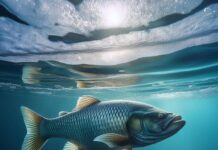DENVER – Colorado boat ramps and put-ins open this month around the state. As outdoor enthusiasts prepare to head out onto the water, CPW has several safety tips for boat navigation, boating equipment and getting to know recreational waters before you go.
“This time of year tends to catch a lot of boaters unaware,” said Kris Wahlers, Colorado’s Boating Safety program manager. “Many things change over the winter; river channels and obstructions, the quality of your equipment, access to lakes, even some rules.
Accidents, injuries and fatalities rose slightly from 2013 to 2014 in Colorado. Wahlers, and his team investigated more than 100 incidents in 2014. CPW officers monitor these statistics and patrol to prevent further increases.
“Sometimes being caught unaware is just an inconvenience, but other times the results can be disasterous. That’s why CPW encourages everyone to know before they go, whether its on personal watercraft, powerboats, rafts, kayaks, canoes or sailboats,” said Wahlers.
Boat navigation
Remember motorized boats always yield to non-motorized vessels like kayaks, canoes, and sailboats under sail. In a head on situation, alter your course by turning right. This sometimes can be easier to see at night because the green light on an approaching vessel (just like in driving) which means the boater has the right of way. If a red light is visible on the approaching vessel, the boater must give way.
Navigation includes the ability to distinguish obstacles and avoid hazards. This is done by keeping an eye out for buoys and markers around the lake that point out “no wake” zones, hazards, and “no boat” zones. Get a better understanding of vessel navigation and buoys at http://cpw.state.co.us/learn/Pages/BoatingSafety.aspx or enroll in a boat safety course by calling (303) 291-7575.
Boat equipment
The first thing a boater should check is that they have the right serviceable safety equipment on the boat before going out on the water. Over the winter months some equipment may have become damaged, so check over each item.
Motorized boats should carry U.S. Coast Guard approved personal flotation devices for each passenger, fire extinguishers, sound producing devices, navigation lights, and the correct boat registration with visible CL numbers.
Non-motorized boats are required to have a noise making device, serviceable U.S. Coast Guard approved PFD for each person and the owners name and address attached to the vessel in lieu of registration. Check your life jackets to make sure that they properly fit each passenger.
Not sure what equipment you need? Get a copy of the 2015 Boating Statutes & Regulations in any one of the CPW regional offices or at the visitor center at the state park that you are at, or contact (303) 291-7575.
Make sure your equipment meets the needs of the water you’re going to boat. Many people underestimate the force of moving water and strong weather when boating. Using a poor quality vessel, either motorized, sail or manually powered in questionable conditions is a recipe for disaster.
Get to know the recreational waters
Gaining a better grasp of the layout of a lake, river or reservoir destination with a map is the best way to prepare for boating on a water where you have never been. The biggest amenity maps can offer is to show areas closed to the public and where “no wake” zones are located. Maps can also point out where potential hazards may exist on the lake.
This information is helpful throughout the year when water levels fluctuate and structures that may not have been exposed in the beginning of the year when the water was higher surface.
Access a map while visiting the visitor center of the park or purchase a topographic map for a more indepth display of features from local fishing or retail stores.
Knowing recreational waters may be even more important on rivers. Because of the dynamic nature of current, obstructions and strainers may come and go in a matter of days, especially in the spring when run off conditions exist. Be sure to get out and scout any and all suspect areas before going through them. If there’s any doubt, find a safer way around.
CPW helps manage approximately one hundred of the boatable waters around the state, find one in your area by visiting the Fishing Atlas. If you have questions, contact any CPW Park or Regional office, call (303) 297-1192 or email dnr_cpw.info@state.co.us.
“The most important thing you can do to help ensure your safety and others safety when boating,” added Wahlers. “Is to know before you go.”
For more information on safe boating go to: http://cpw.state.co.us/learn/Pages/BoatingSafety.aspx. For more information about registering a boat go to: http://cpw.state.co.us/buyapply/Pages/BoatingRegistrations.aspx.
CPW is an enterprise agency, relying primarily on license sales, state parks fees and registration fees to support its operations including 42 state parks and more than 300 wildlife areas covering approximately 900,000 acres, big-game management, hunting, fishing, wildlife watching, camping, motorized and non-motorized trails, boating and outdoor education. CPW’s work contributes approximately six billion dollars in total economic impact annually throughout Colorado.
Source: Colrado Parks and Wildlife




